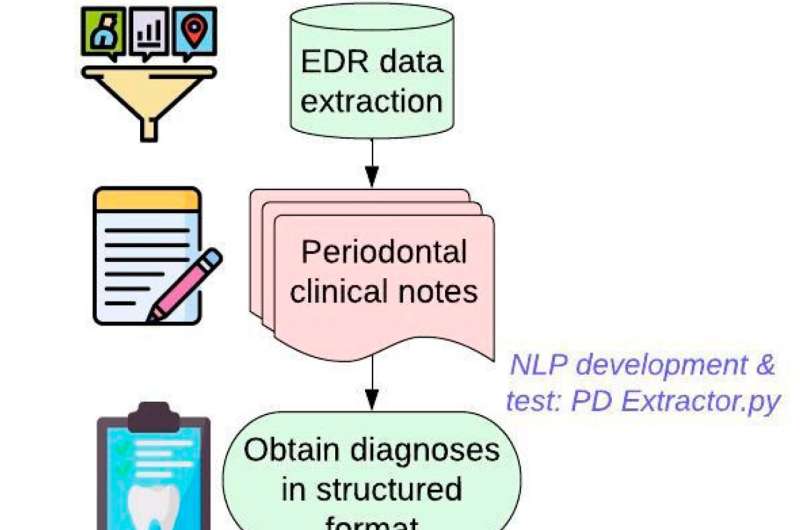This article has been reviewed according to Science X's editorial process and policies. Editors have highlighted the following attributes while ensuring the content's credibility:
fact-checked
trusted source
proofread
Tracking periodontal disease to improve diagnosis and treatment

Periodontal disease is a growing public health issue in the United States as the nation's population ages, yet it's underdiagnosed and undertreated. According to the U.S. Centers for Disease Control and Prevention (CDC), 47% of adults aged 30 years and older and 79% of adults 65 years and older have some form of periodontal disease.
Researchers from Regenstrief Institute and Indiana University School of Dentistry have developed computer algorithms to track periodontal disease change, which could help dentists and periodontists follow disease progression. They also have developed tools to enable the use of electronic dental record data to automate diagnosis of the disease.
Their work, titled "Developing Automated Computer Algorithms to Track Periodontal Disease Change from Longitudinal Electronic Dental Records," is published in a special issue of the journal Diagnostics, itself titled "Advances in Biomedical and Dental Diagnostics Using Artificial Intelligence."
In the early stage of periodontal disease—gingivitis—gums are swollen, red and may bleed. In its more serious form, called periodontitis, the gums can pull away from the tooth, bone can be lost, and teeth may loosen or even fall out. Retention of natural teeth is important for good nutrition and other factors related to maintaining good health.
"Gum disease, which is typically underdiagnosed, is reversible if caught at an early stage before it has affected underlying structures and adversely impacted tooth support. Enabling dentists to track the disease using both the information in clinical notes and the periodontal charting data contained in a patient's electronic dental record can enable diagnosis and hope," said Thankam Thyvalikakath, DMD, MDS, Ph.D., who leads the Regenstrief Institute-IU School of Dentistry Dental Informatics Program.
She added that "we are here to develop and establish a culture of documenting and diagnosing cases in a structured manner as is done in medicine," she notes that approximately 90% of dental practices in the U.S. use electronic dental records.
"I think the advantage of our approaches is that using routinely collected data, we can automate and monitor gum disease treatments and changes that are visible only clinically, so we can catch gum disease at an early, potentially reversible, stage. This contrasts with other approaches that leverage only radiographs, which only show advanced gum disease."
Factors increasing risk of periodontal disease include tobacco use, diabetes, poor oral hygiene, stress, defective dental fillings, and bridges as well as medications that cause dry mouth.
"There is a bidirectional relationship between certain risk factors and gum disease," said Dr. Thyvalikakath. "For example, having diabetes increases risk of periodontal disease and having periodontal disease negatively affects the course of diabetes. A similar relationship exists between cardiovascular disease and periodontal disease. Recognizing, monitoring, and treating gum disease is an important part of overall patient health."
More information: Jay S. Patel et al, Developing Automated Computer Algorithms to Track Periodontal Disease Change from Longitudinal Electronic Dental Records, Diagnostics (2023). DOI: 10.3390/diagnostics13061028




















